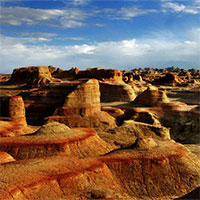Tea rinsing or washing tea is no stranger to many tea lovers. Tea drinkers have different opinions about the functions of tea.
Some of them think it is necessary, as it can wash away pesticide residues; Others think it is a waste to throw away the tea first, so they don’t like to wash the tea. So, what is the role of tea coating?
Literally, it means to wash the tea leaves, especially when making tea with a teapot or a Khai cup according to the Chinese Kungfu method, we first put water in the tea, then pour the water out, and the process This is called coated tea.
According to research, the term “Rinse Tea” dates back to the Northern Song Dynasty and has been used in the process of tea drinking to this day.
The Chinese Tea Dictionary explains: Coating tea can remove impurities on the surface of tea leaves, stimulating tea aroma and flavor . It can be seen that making tea is a habit that people have used thousands of years ago.

Making tea is a habit that people have used thousands of years ago.
Regarding this question, the most common explanation is that washing tea can help remove impurities, bacteria on tea leaves ; some people may think that they will be considered unprofessional and unhygienic if they do not rinse the tea; Others believe that such tea washing can remove pesticide residues on tea leaves, which is also a concern for many people.
In fact, pesticides, heavy metals and other indicators of qualified teas circulated in the market are all within safe limits set by national standards. Meanwhile, with the development of agricultural science and technology, many tea gardens now use organic growing methods and can prevent pests in a more scientific way.
In addition, most pesticides are actually fat soluble and rarely water soluble, so they cannot be easily removed with water. In general, the main purpose of rinsing tea is to develop its flavor.
Fresh tea leaves will go through many processes to be made into drinkable tea after being picked from the plant. Some ripe pu-erh also need heap fermentation and then compaction into tea cakes, which will inevitably mix in some impurities, dust and tea scum.
Therefore, rinsing tea before we brew them can effectively remove most of the impurities. However, modern tea production and processing processes are becoming more and more complete, and environmental and sanitary requirements are increasingly strict, so we don’t need to worry too much about dirt in tea.

Rinsing the teas before we brew them can effectively remove most of the impurities.
We all know that different teas need different brewing temperatures, otherwise, the taste of the tea won’t be as good. For example, green and black tea usually require 80 – 85 oC water, oolong and pu-erh usually need 100 oC water. If we do not pre-rinse the tea, but put the water directly into the teapot, the temperature of the actual tea water will quickly drop so much that the request cannot be met and the aroma of the tea will not be fully displayed. .
So washing the tea in the first time will help us to warm the teapot, and to promote better release of tea aroma.
Tea lovers who love pu-erh tea know that some aged pu-erh teas need to be awakened before brewing, to remove the old flavors. In the same way, some aged white teas also need to be washed before brewing. In this way, the leaves pressed into the cake can be slowly stretched, and the substances inside the tea can be released quickly, so that the taste and aroma will be richer and more fragrant.
Besides, for oolong tea, especially green oolong, we usually keep them in the refrigerator to maintain the aroma and freshness. However, the tea leaves will be cooler than usual and if we brew them directly, the first water will lack aroma and taste. On the contrary, if we wash the tea once, then the taste and aroma will be much better.
For some granular teas like oolong tea, or some pearl-like teas like Tieu Long Chau. Since their leaves are tightly rolled, and it is difficult to open them the first time, the required braking time may be longer than later. At this point, rinsing the tea can help us to reduce the brewing time and remove the tea leaves.
At this point, the pre-washed tea will have a stronger flavor.
Infiltration means that before making tea, we can take out some tea leaves, put in some water and then quickly pour out the water, it can also help release the aroma of tea.
Shaving means we can quickly fill the kettle with boiling water. At this point we will see some foam floating on the surface of the teapot. Some people like to scrape off this foam, and then discard the coated tea. (Actually, the main ingredient of these foams is saponin, which has antibacterial, anti-inflammatory and analgesic effects and is not harmful to our body.) This way is suitable for making oolong and ice mountain teas. .
The infiltration method should not use too much water, this is more suitable when the water just submerges the tea leaves.
Tea washing time is not long, within 5-10 seconds is fine.
For some soft teas, such as green tea and white tea, the water temperature should not be too high, it is better to match the required water temperature. Rinse them quickly otherwise excessive loss of nutrients will result in poor taste.

